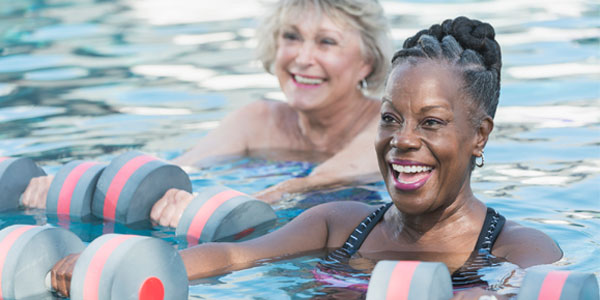After decades of alarms clocks, timesheets, deadlines and all-too-short vacations, you’re finally retired. And guess what? Along with well-deserved leisure and relaxation, your new freedom affords time for fitness and physical activity. Minerva Navarro, M.D., a geriatrician at the Palo Alto Medical Foundation’s Mountain View Center, encourages her patients to view retirement as a time to get active, not slow down.

“The golden years of retirement should not equate with a sedentary life,” she says. “It’s never too late to reap the benefits of regular exercise. No matter how long it has been since you’ve exercised or how old you are, there is some sort of appropriate exercise that can boost your fitness, energy and overall well-being.”
Dr. Navarro emphasizes the many benefits of exercise for seniors, beyond an overall improvement in fitness levels.
“Regular exercise lowers the prevalence of risk factors linked to heart disease, type 2 diabetes and high blood pressure,” she says. “It also diminishes the risk of depression and lessens the severity of depressive symptoms,” a common complaint among older adults.
Building physical fitness involves working your heart, lungs and muscles regularly. Ideally, as a senior (or an adult of any age), aim for some form of aerobic exercise at least three times a week. The key is finding the right exercise program that is fun, challenging and safe for you.
Dr. Navarro encourages seniors to talk with their doctors before starting an exercise program. Because seniors have a higher risk for bone or joint injuries and may take longer to recover from getting hurt, look for low-impact programs, such as:
- Water aerobics or swimming
- Walking, moderate hiking or jogging
- Dancing, provided the style of dance is low-impact
- Light weights and calisthenics
- Biking
- Bowling
- Golfing
- Yoga
“Muscle strength begins to decline after age 50, but regular exercise can ward off weakening and boost health in older adults,” Dr. Navarro says. “I truly believe that exercise is the fountain of youth.”









